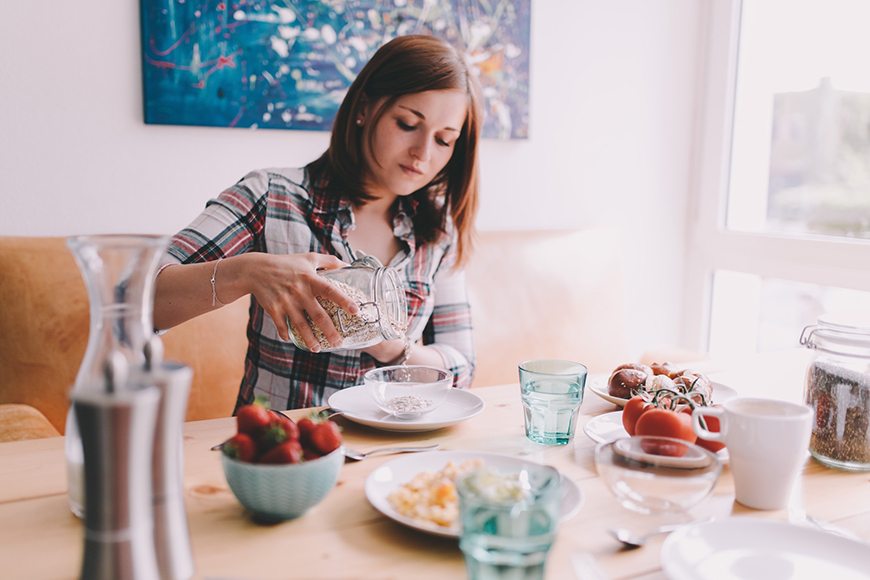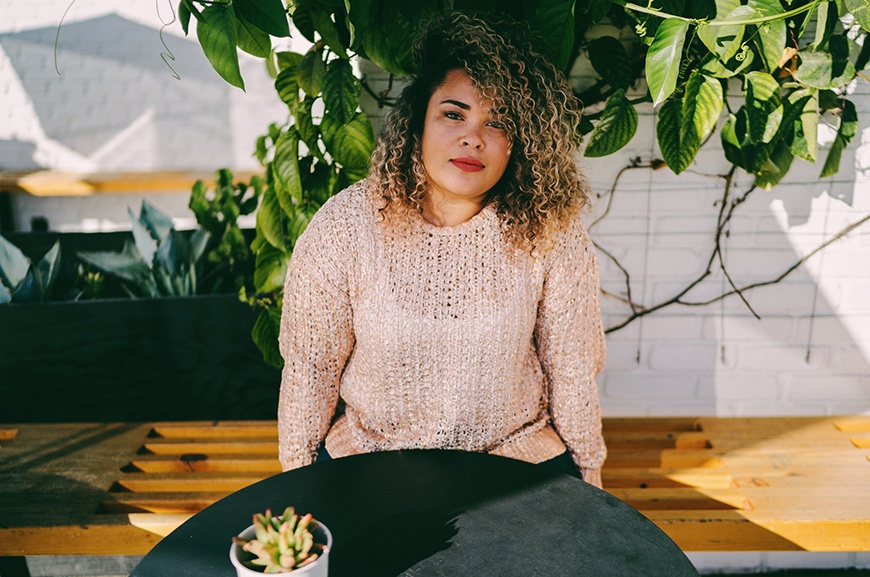Look into any wellness aficionado's kitchen, and you'll undoubtedly find the following staples (nestled between kale leaves and bottles of apple cider vinegar): coconut oil, avocados (duh), mixed nuts, and a slab of salmon.
The lowest common denominator here? That's a slew of healthy fats—which seem to be the buzziest diet staples right now, in this era of the ketogenic diet and avocado worship. The thing is, despite their coveted glow-inducing, mood-boosting, and high-energy benefits, there's a point at which you can eat too many fats—and this could take a toll not only on your body, but also on your complexion.
As more and more information is shared about the link between skin woes and diets, there's evidence that both high glycemic index foods as well as dairy can potentially spawn breakouts. While science is still lacking a definitive answer to back up the fact that high-fat foods could do the same, anecdotal proof is seen across dermatologist's, facialist's, and nutritionist's offices alike.
According to Kristina Holey, a holistic skin expert, a line is crossed when too many fats are consumed. "I thoroughly go over dietary patterns, skin care, and symptoms with my patients, and pretty much everyone who does a consult with me is highly symptomatic," she says. "One thing that's started picking up over the last year is the overconsumption of fats—it's detrimental to people's skin."

{{post.sponsorText}}
She says this is because of gut imbalances and liver congestion, which can overload the body and, in turn, cause congestion in the skin, leading to breakouts, redness, and other skin issues. (Yikes.)
Keep reading to learn more about the problem with too much fat and how that can take your complexion from glowy to inflamed.

When the line of healthy fats is crossed
If you're a fat devotee–of the good kind, not the saturated sort—chances are you're feeling fine digging into your daily dose of almonds (or whatever your fat of choice is). That is, until you see red bumps sprout up on your face or feel digestive woes.
"I can see a lot from someone's skin condition, and just looking at them I can tell they're not able to process what they're eating and they're overdoing it," says Holey. "I see a shift in the lipid profile of the skin, so the actual sebum the skin's producing becomes highly inflammatory and much more susceptible to producing acne, rosacea, things like dermatitis, and results in a weakened barrier of the skin."
"I see a shift in the lipid profile of the skin, so the actual sebum the skin's producing becomes highly inflammatory and much more susceptible to producing acne."
Not only that, but Holey notes that the inundation of fat can cause congestion in the lymph nodes, which has the ability to create a greasy texture on the skin. "A lot of processed foods impact the microbiome," explains Holey, pointing out that many fats—from coconut butter to some different oils—can sometimes actually be processed, which in turn can have a negative impact on skin.
With skin in particular, the issue lies in an overwhelmed digestive system. "When your system gets blocked up with too much fat, fat globules get stuck," says Ashley Koff, RD and CEO of The Better Nutrition Program. "Your body will try to eliminate, and the first place it'll do that is through the skin." This can result, she explains, in potential skin woes such as cystic acne and darkened under eyes.

The skin-friendly solution
It's important to note that unless you've seen changes in your skin that you want to address, you can keep-on-keeping on with your newly minted high-fat diet. If you do, however notice a difference, the recipe for good skin from the inside out is all about finding balance with whole foods. "The body's wired to want a lot of vegetables, a little bit of protein and fat, and call it a day," says Holey, who adds that healthy fats should still be eaten, but as part of a well-rounded plan. "It's about a moderate diet of whole foods and a really wide variety of them for the best success."
And Koff echoes this: "Your stomach is like a gas tank," she explains. "When you give it too much of something at one time, the body can't process it sufficiently. So your body starts storing the fat and it doesn't break down as easily, which contributes to poorer skin and energy levels."
By focusing on eating fats, you could also be side-stepping the necessary minerals (not to mention nutrients from other food groups) for a healthy, robust diet. "Despite fats being easier to digest than some carbs, when you avoid certain food groups and focus on others—like fats—you're missing out on certain nutrients," says Koff. "So when you're over-eating fats, it can play out on the skin or in health issues. I'm noticing in patients doing the ketogenic diet that they're not making up for daily essentials that they need." And that's exactly why you can wind up an imbalanced complexion in some people.
The moral of the story? For a happy glow—and a happy gut—it's important to not go overboard on the avocados (sorry), and instead eat your fats in moderation (and in tandem) with other good-for-you food groups. Your body and skin will thank you for it.
When things are out of wack, these are the best spot treatments, according to dermatologists. And this is the way to beat acne if Proactiv isn't for you.
Loading More Posts...